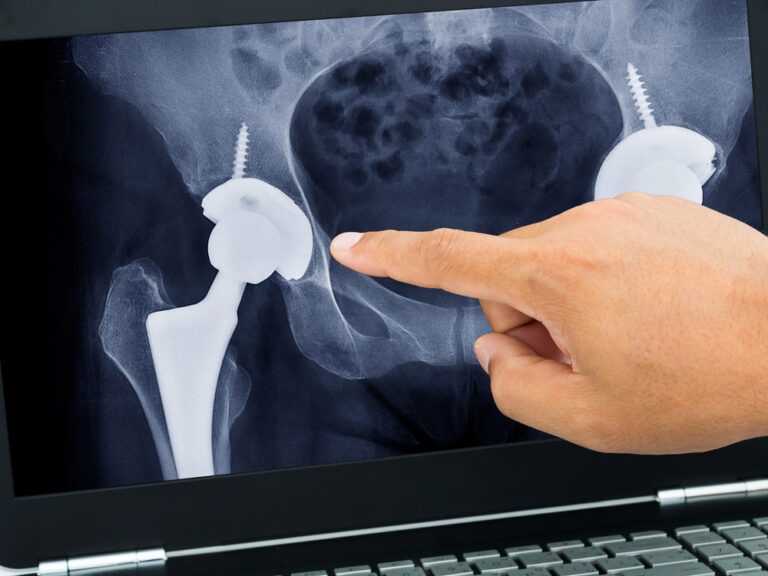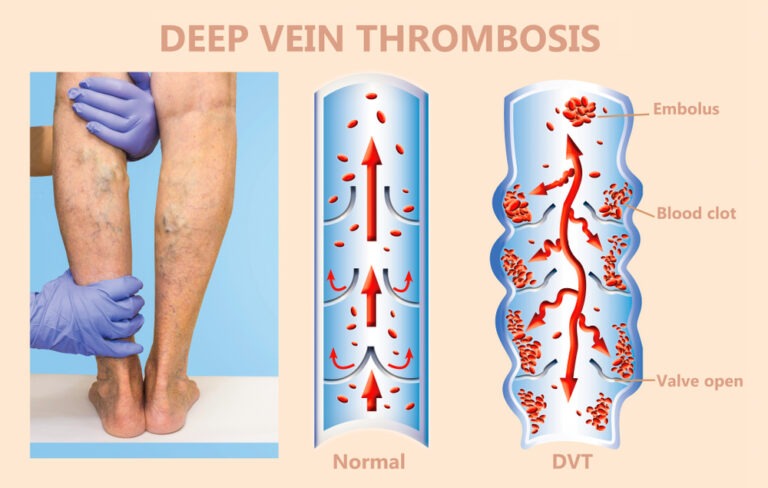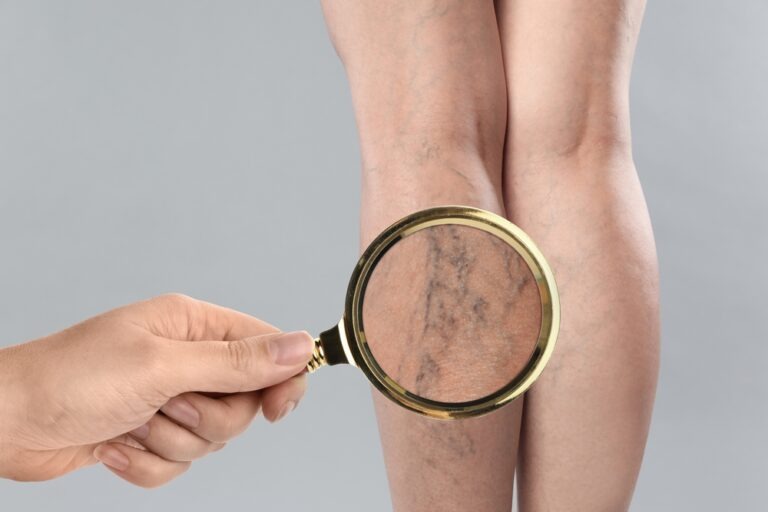As an Amazon Associate. We get small commissions for purchases made through affiliate links in this post at no extra cost to you. More info. Amazon Affiliate Disclaimer
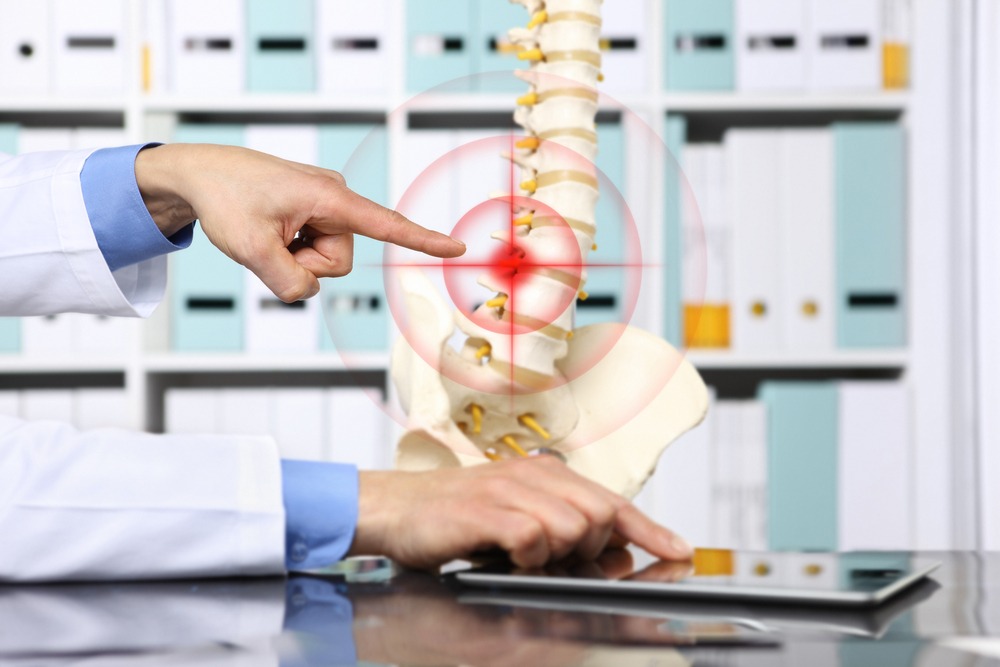
Intervertebral disc definition
To know what the intervertebral disc function is, we must first know what it is, its components and its anatomy.
The intervertebral disc (intervertebral fibrocartilage) as its name appears is the part that lies between every two vertebrae of the spine.
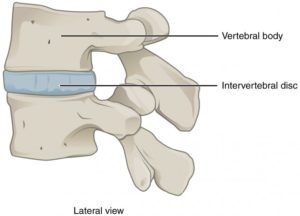
The intervertebral disc consists of 2 main components which are the outer fibrous ring (annulus fibrosus), which surrounds the inner component in the center of the intervertebral disc (the nucleus pulposus).
Intervertebral disc function
The function of the nucleus pulposus of the disc is to distribute hydraulic pressure in all directions within each intervertebral disc under compressive loads like bodyweight, lifting objects or other external forces.
But the nucleus pulposus consists of large vacuolated notochord cells, small chondrocyte-like cells, collagen fibrils, and other types of materials which provide the disc with the strength and durability and maintain the Intervertebral disc connected to every vertebra above and below.

The intervertebral disc is a very important component of the vertebral column. It provides flexibility, act as a ligament to hold the vertebrae together and make the movement between every two vertebrae possible and make the vertebral column possible to bend in different directions according to its region and position within the vertebral column.
As one of the most important functions of the intervertebral disc is the shock absorption, So when you be exposed to direct or indirect trauma (external force) it acts like a shock absorber which can decrease the impact of the trauma or force on your spine.
The vertebral column consists of 33 vertebrae divided into 5 regions, which are the:
Cervical spine (7 vertebrae)
Thoracic spine (12 vertebrae)
Lumbar spine (5 vertebrae)
Sacral spine (5 fused vertebrae)
Coccyx spine (4 fused vertebrae)
The upper 24 vertebrae are separated by the intervertebral discs, but the lower 9 vertebrae which are the sacral and coccyx vertebrae are fused in adults, which makes each region separated without intervertebral disc, so the movement in the lower 9 vertebrae is impossible.
Intervertebral disc conditions:
-
Disc Herniation
Herniation of the intervertebral disc occurs due to the unbalanced mechanical pressure on the annulus fibrosus may be due to bad posture, bad sudden movements or trauma like in RTA or sudden faulty movement with or without lifting objects (extra weight to your body weight), and therefore causing a tear of annulus fibrosus which allow the nucleus pulposus to exit the intervertebral disc causing pressure on the nerves within the vertebral column.
The intervertebral disc herniation could be sudden or gradual in its onset:
Sudden disc herniation is a force of sudden movement of your body during daily activities or for example sudden sneezing during faulty posture (when there is maximal unbalanced pressure within your spine upon your intervertebral disc), this makes the nucleus pulposus to exit from the weakest point right on time.
Gradual disc herniation could be caused by a gradual bulge or exit of the nucleus pulposus due to bad habits of posture, obesity or in certain sports which need lifting weights.
Symptoms of the intervertebral disc herniation:
- Acute or chronic like in low back pain in case of lumbar disc herniation.
- Sometimes referred pain to the lower limbs (in lumbar disc herniation) or referred pain to the upper limbs (in the cervical disc).
- Paresthesia (decreased sensation) or Numbness over the surface area innervated by the compressed nerve (dermatomes).
- Sometimes decreased muscle tone ( hypotonia).
- Muscles weakness in muscles which innervated by the compressed nerve.
Sometimes if there is a big or broad disc herniation especially in the sacral intervertebral disc herniation that will cause compression on cauda equina ( cauda equina syndrome) which causes symptoms like loss of bowel or bladder control.
-
Disc Degeneration
After the age of 40 most of people about 60% of them has degeneration of the intervertebral disc as a normal aging process, which is decrease water and other materials like the proteoglycans in the nucleus pulposus which gives the intervertebral disc it’s durability and softness which make the disc able to do its normal function which is the shock absorption. Also, the annulus fibrosus be weak and susceptible to tear.
Degeneration can cause symptoms like a severe muscle spasm or sometimes contracture in the lumbar or thoracolumbar spine.
Treatment of the disc conditions:
Often physiotherapy or surgery are the most common and effective treatment options for the intervertebral disc herniation and to decrease the symptoms the arise from aging degeneration.
Get Great Reviews & Buyer Guides into Your Inbox
References:
- Drake, Richard L.; Vogl, Wayne; Tibbitts, Adam W.M. Mitchell; illustrations by Richard; Richardson, Paul (2005). Gray’s anatomy for students. Philadelphia: Elsevier/Churchill Livingstone
- Antoniou, J.; Steffen, T.; Nelson, F.; Winterbottom, N.; Hollander, A. P.; Poole, R. A.; Aebi, M.; Alini, M. (1996). “The human lumbar intervertebral disc: Evidence for changes in the biosynthesis and denaturation of the extracellular matrix with growth, maturation, aging, and degeneration”. Journal of Clinical Investigation. 98 (4): 996–1003.
- Urban, Jill PG; Roberts, Sally (11 March 2003). “Degeneration of the intervertebral disc”. Arthritis Res Ther. 5 (3): 120.
- Drake, Richard L.; Vogl, Wayne; Tibbitts, Adam W.M. Mitchell; illustrations by Richard; Richardson, Paul (2005). Gray’s anatomy for students. Philadelphia: Elsevier/Churchill Livingstone. p. 17
- Saladin, Kenneth (2012). Anatomy & Physiology. McGraw-Hill. p. 565.
- Capoor, Manu N.; Ruzicka, Filip; Schmitz, Jonathan E.; James, Garth A.; Machackova, Tana; Jancalek, Radim; Smrcka, Martin; Lipina, Radim; Ahmed, Fahad S. (3 April 2017). “Propionibacterium acnes biofilm is present in intervertebral discs of patients undergoing microdiscectomy”. PLOS ONE. 12 (4):
- Jensen, Maureen C.; Brant-Zawadzki, Michael N.; Obuchowski, Nancy; Modic, Michael T.; Malkasian, Dennis; Ross, Jeffrey S. (1994). “Magnetic Resonance Imaging of the Lumbar Spine in People without Back Pain”. New England Journal of Medicine. 331 (2): 69–73.
- Williams, F. M. K.; Manek, N. J.; Sambrook, P. N.; Spector, T. D.; MacGregor, A. J. (2007). “Schmorl’s nodes: Common, highly heritable, and related to lumbar disc disease”. Arthritis & Rheumatism. 57 (5): 855.







